Gibbons are small, arboreal apes that inhabit the rainforests of Southeast Asia. Despite being agile and acrobatic creatures, they face a number of challenges in their natural habitats, including predation from various animal species.
While gibbons are generally considered to be at the top of the food chain within their ecosystem, there are several predators that pose a significant threat to their survival.
Understanding the predators of gibbons is important for conservation efforts aimed at protecting these primates.
By identifying which animals prey on gibbons and where they are most vulnerable, researchers can develop strategies to reduce human impact on gibbon habitats and create effective measures for preventing future attacks by predators.
Through comprehensive research into the topic of gibbon predation, we can gain valuable insights into how best to safeguard this threatened primate population.
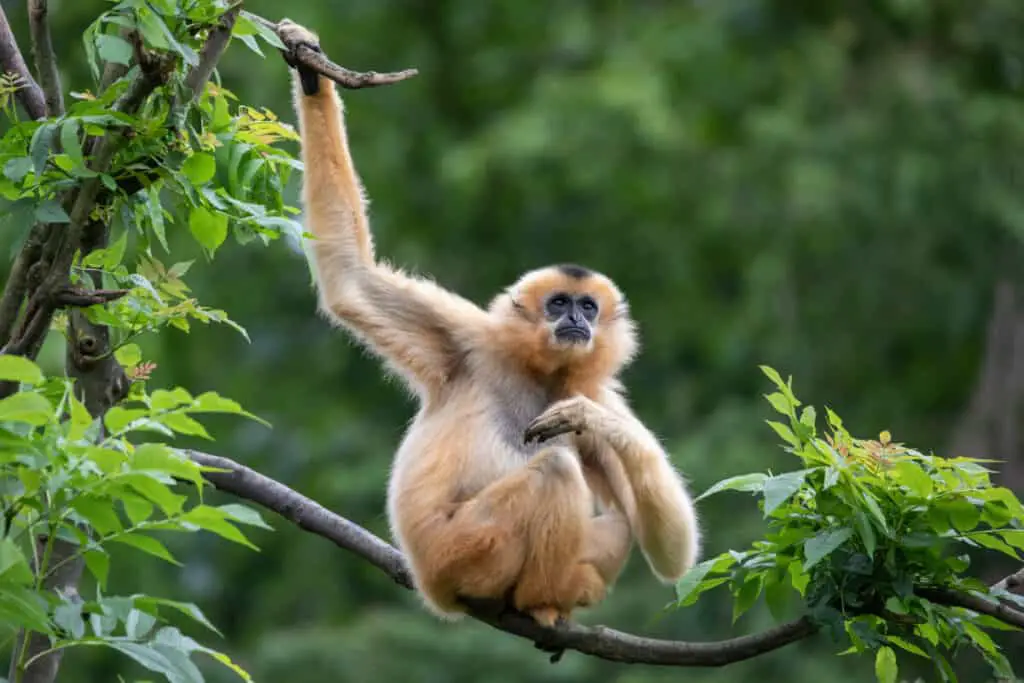
The Natural Habitat Of Gibbons
Gibbons are small, arboreal primates that live in tropical and subtropical forests of Southeast Asia. They can be found in Brunei, Cambodia, Indonesia, Laos, Malaysia, Myanmar, Thailand, and Vietnam. Gibbons prefer to inhabit primary rainforests with a dense canopy cover for protection from predators and access to their main food source: fruit.
The gibbon diet consists mainly of fruits such as figs, bananas, and durians. However, they also eat leaves and flowers when fruit is scarce. Despite their mostly herbivorous diet, gibbons have been observed eating insects on occasion.
Unfortunately, habitat destruction due to logging activities has led to the decline of their preferred forest habitats which puts them at risk of extinction. As a result of these destructive practices coupled with poaching and hunting pressures for meat or pets; some species such as the Hainan gibbon are critically endangered with less than 30 individuals left in the wild.
The Importance Of Understanding Gibbon Predation
Understanding the predators of gibbons is crucial in comprehending their ecological impact. Gibbons are primarily preyed upon by large carnivorous animals such as leopards, tigers, and pythons. The extent to which these predators impact gibbon populations varies depending on factors such as habitat fragmentation, human encroachment, and hunting practices.
Gibbons have developed various behavioral adaptations that help them avoid predation. They are known for being extremely agile and swift climbers, allowing them to move quickly through trees to escape danger. Additionally, they often sleep high up in trees or build nests out of reach from predators on lower branches.
By studying both the predators and prey, we can gain a better understanding of the intricate relationships between species within ecosystems. This includes their role in the food web, population dynamics, behavioral adaptations, climbing abilities, and nest-building strategies.
It is clear that understanding gibbon predation plays an essential role in maintaining healthy ecosystems where these primates reside. While humans often focus on protecting individual species, it is important to recognize how each species fits into its environment as a whole.
Through continued research efforts focused on predator-prey relationships and other aspects of animal behavior, we will be able to make informed decisions about conservation efforts aimed at preserving our planet’s biodiversity.
Apex Predator Status Of Gibbons
The apex predator status of gibbons is a topic of interest for researchers in primatology. While these apes face threats from various predators, their role as prey remains poorly understood.
Gibbon hunting by humans has been reported in several countries across Southeast Asia, where they are hunted for food or captured for the pet trade.
This practice has had a significant impact on gibbon populations, leading to declines and local extinctions.
In addition to human predation, other potential predators of gibbons include large carnivores such as leopards.
However, studies suggest that predation rates may be low due to the evasive behavior and agility of gibbons.
Predator population dynamics can also play a role in regulating gibbon populations indirectly through competition for resources such as fruit trees and insects.
Overall, understanding the ecological relationships between gibbons and their predators is crucial for conservation efforts aimed at protecting these endangered animals from further decline.
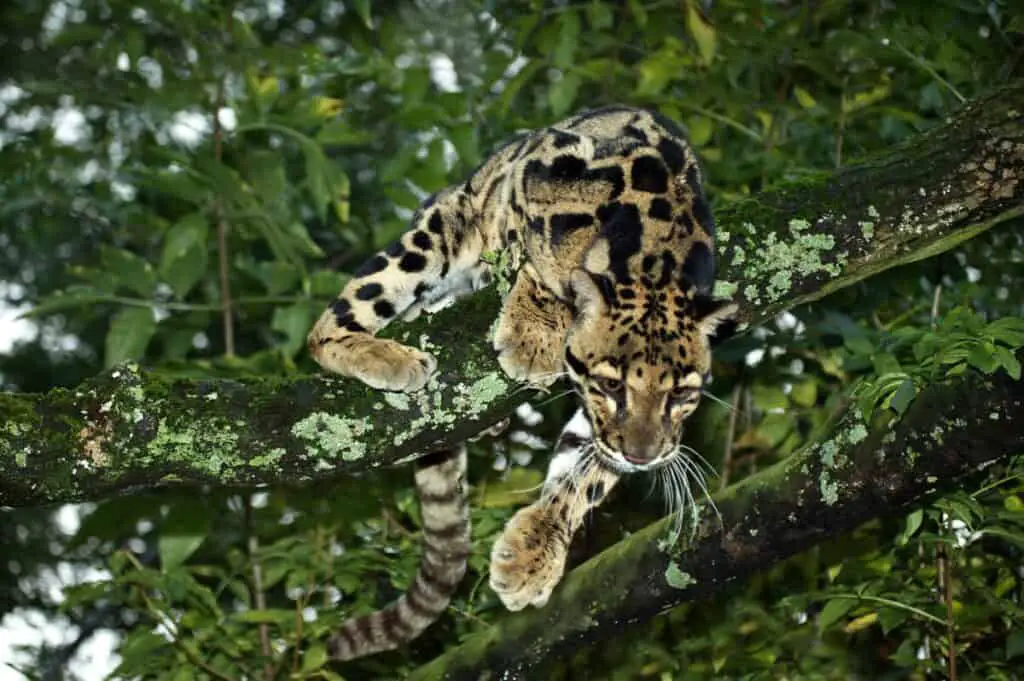
Threats To Gibbons From Other Animals
Gibbons are arboreal primates that inhabit the tropical and subtropical rainforests of Southeast Asia. Although they have few natural predators, gibbons face hunting pressure from several animals within their ecosystems.
One such predator is the clouded leopard, which has adapted its hunting behavior to take advantage of gibbon habitats by stalking and ambushing them in trees. Clouded leopards have a keen sense of sight and can move deftly through forest canopy, making it challenging for gibbons to escape once caught.
Another animal known to prey on gibbons is the reticulated python. These serpents use stealth tactics to catch unsuspecting gibbons as they leap between branches or rest on tree limbs. Reticulated pythons rely on their powerful muscles to constrict their prey before swallowing them whole.
In response to these threats, gibbons have developed adaptations that enable them to evade predators more effectively. For instance, these primates possess long fingers with opposable thumbs that allow them to swing quickly and efficiently through treetops while avoiding danger. Additionally, some species of gibbons have been observed using vocalizations as an alarm system when potential predators approach. By communicating with each other through specific calls, they alert others in the group about incoming danger and coordinate defensive strategies accordingly.
Despite these adaptations, however, human activities remain among the most significant threats facing wild populations of gibbons today.
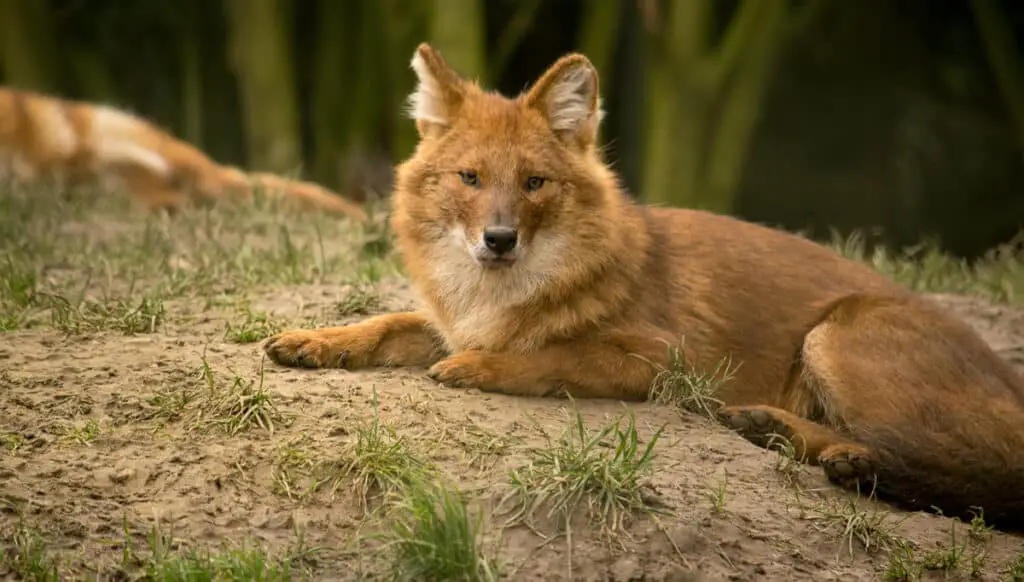
Dholes
Dholes, also known as Asian wild dogs, are highly social and efficient predators. They are known to hunt cooperatively in packs, making them formidable threats to gibbons. Dholes have a strong sense of teamwork and coordination, allowing them to surround and overwhelm their prey.
When dholes encounter gibbons, they use their speed and endurance to chase them through the trees, often relying on their agility to cut off escape routes. Once a gibbon is isolated or exhausted, the dholes will launch a synchronized attack, utilizing their sharp teeth and powerful jaws to bring down the gibbon. The pack then works together to subdue and consume their captured prey.
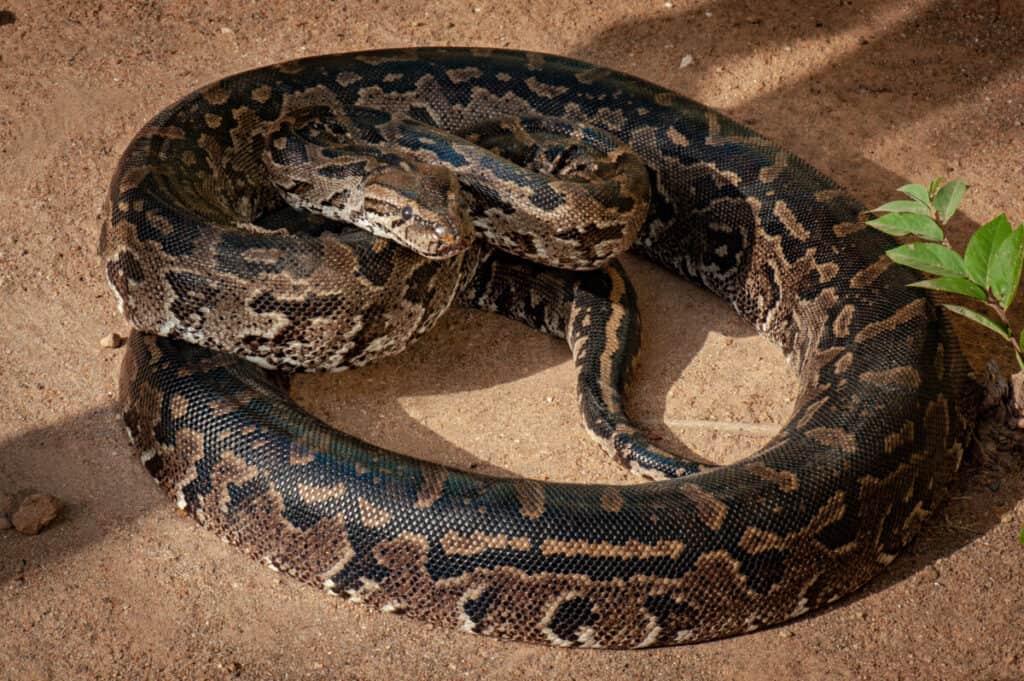
Pythons
Pythons, particularly larger species such as reticulated pythons or Burmese pythons, are powerful constrictor snakes that can pose a threat to gibbons. Pythons are skilled climbers and can ambush gibbons in the trees or attack them on the ground.
When a python encounters a gibbon, it strikes quickly, wrapping its muscular body around the gibbon’s body or limbs, constricting and suffocating it.
Pythons have the ability to consume prey much larger than their own head size, so once the gibbon is immobilized, the python will swallow it whole, using its flexible jaws to accommodate the gibbon’s body.
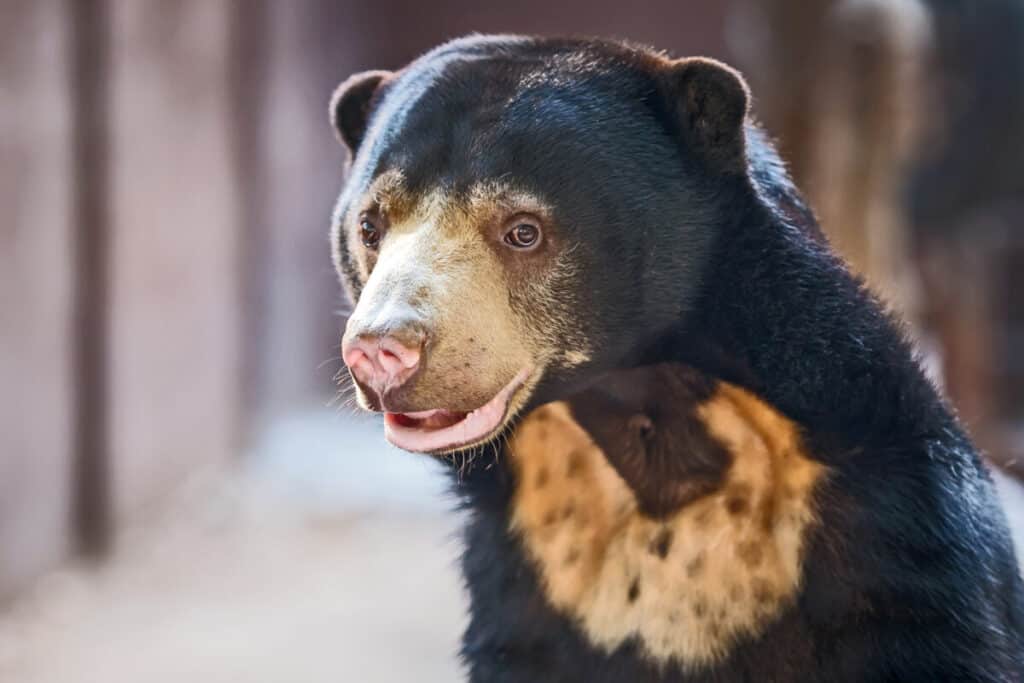
Sun Bears
Sun bears are the smallest bears in the world, but they are still powerful predators. While they primarily feed on fruits, insects, and small vertebrates, including rodents, sun bears can occasionally target gibbons.
When a sun bear encounters a gibbon, it may pursue it through the trees or confront it on the forest floor. Sun bears have strong jaws and long, sharp claws that enable them to inflict injury and immobilize their prey. They can use their strength and agility to overpower a gibbon, delivering powerful swipes and bites to subdue it before consuming it as a source of food.
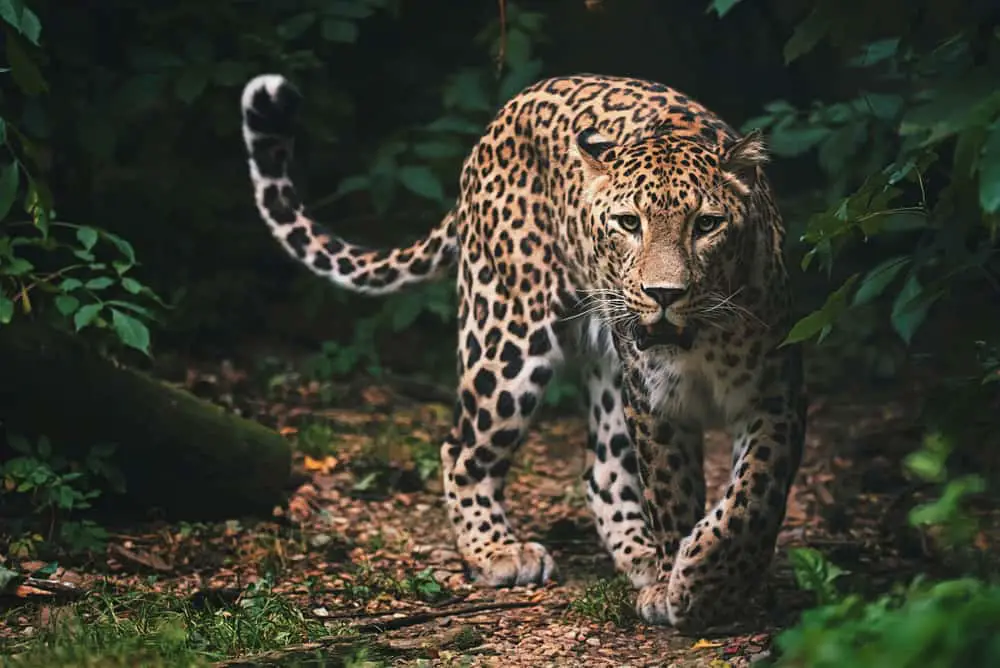
Leopards
Leopards are stealthy and adaptable big cats known for their climbing abilities. They can be a threat to gibbons when they come into contact in overlapping habitats. Leopards rely on stealth and ambush tactics to capture their prey.
When a leopard encounters a gibbon, it utilizes its spotted coat to blend into the surroundings and stalks the gibbon from the trees.
With a sudden pounce, the leopard immobilizes the gibbon with a bite to the neck or throat. Leopards have powerful jaws and sharp claws, allowing them to bring down and consume a gibbon, either in the trees or on the ground.
Analysis Of Predator-Prey Relationships
Threats to Gibbons from Other Animals have been well-documented, and it is important to understand the predator-prey dynamics that exist in their natural habitat.
While gibbons are arboreal primates and spend most of their time in trees, they are not immune to predation by larger animals. Some of the predators of gibbons include leopards, tigers, pythons, crocodiles, eagles, and other large birds of prey.
Predator-prey relationships play a significant role in shaping ecosystems and can have far-reaching ecological impacts. For example, if populations of gibbon predators were to increase significantly due to factors such as loss of habitat or hunting pressure on other species, this could have negative effects on the entire ecosystem.
As apex predators themselves, gibbons also play an important role in regulating populations of smaller prey animals within their habitats. Understanding these complex interactions between species is crucial for effective conservation efforts aimed at protecting both gibbons and their surrounding environments.
Loss of key primate species like gibbons can lead to imbalances in ecosystems.
The thought of these beautiful creatures being hunted by larger predators can evoke feelings of sadness and helplessness.
Conservation efforts must take into account the broader ecological impact that may result from changes in predator-prey dynamics.
Conservation Efforts To Protect Gibbons
The plight of gibbons has been a cause for concern among conservationists, as their populations have experienced a significant decline in recent years.
The primary threat to their survival is habitat loss due to deforestation and human encroachment. However, other factors such as hunting, poaching, and the pet trade also contribute to their dwindling numbers.
To address this issue, various organizations and stakeholders have initiated gibbon conservation efforts that aim to protect these primates from extinction.
One approach to gibbon conservation involves community involvement in protecting their habitats. This strategy recognizes the importance of engaging local communities living near gibbon habitats in conservation activities.
By involving them in monitoring and patrolling forests where gibbons live, educating them about the ecological significance of these primates, and providing alternative livelihoods that do not involve harming wildlife, it becomes possible to mitigate threats posed by humans while promoting sustainable development practices.
Another critical component of gibbon conservation is habitat restoration. Efforts are underway to restore degraded forest areas through reforestation initiatives aimed at creating new habitats for gibbons and other threatened species.
Restoring natural ecosystems can help reduce fragmentation, increase connectivity between protected areas, and provide corridors for animal movement across landscapes fragmented by human activity.
Through concerted efforts such as community involvement and habitat restoration programs which ensure the long-term survival of gibbons; we can hope for the recovery of wild populations and conserve biodiversity hotspots around the world.
Future Directions For Gibbon Research
Conservation efforts to protect gibbons have been implemented in various ways, including habitat conservation and rehabilitation programs. However, it is important to understand the ecological factors that affect gibbon populations, such as their predators.
Gibbons are preyed upon by a number of different predators, including large felids like tigers and leopards, as well as pythons and eagles. Understanding the behavioral ecology of gibbons can help shed light on how they respond to predation threats.
For example, studies have shown that gibbons use vocalizations not only for communication but also to deter potential predators. By analyzing these complex vocalizations, researchers can gain insight into how gibbons perceive their environment and evaluate risks associated with predator presence.
Future research should continue to explore the mechanisms behind gibbon anti-predator behaviors in order to better protect this endangered primate species.
In conclusion, understanding the relationship between gibbons and their predators is crucial for implementing effective conservation measures. Behavioral ecology studies can provide valuable insights into how these primates adapt to changes in their environment and defend themselves against threats from predators. Through continued research efforts, we can work towards ensuring the long-term survival of gibbon populations around the world.
Conclusion
Gibbons are fascinating primates that inhabit the forests of Southeast Asia. They play a crucial role in their ecosystem, and understanding their predator-prey relationships is essential to protecting them from extinction.
Despite being considered apex predators within their habitat, gibbons face threats from other animals such as leopards, pythons, and eagles.
Through analyzing these predator-prey relationships, we can gain insights into how to conserve and protect gibbons effectively. Conservation efforts have been underway for some time now, with organizations focusing on preserving natural habitats and reducing human activities that threaten the survival of these creatures.
In the future, continued research could help us better understand how to manage this delicate balance between gibbons and their predators, ensuring they thrive for generations to come. Ultimately, it is vital that we recognize the importance of protecting all species in our world’s ecosystems so that we may preserve the beauty and diversity of nature itself.

